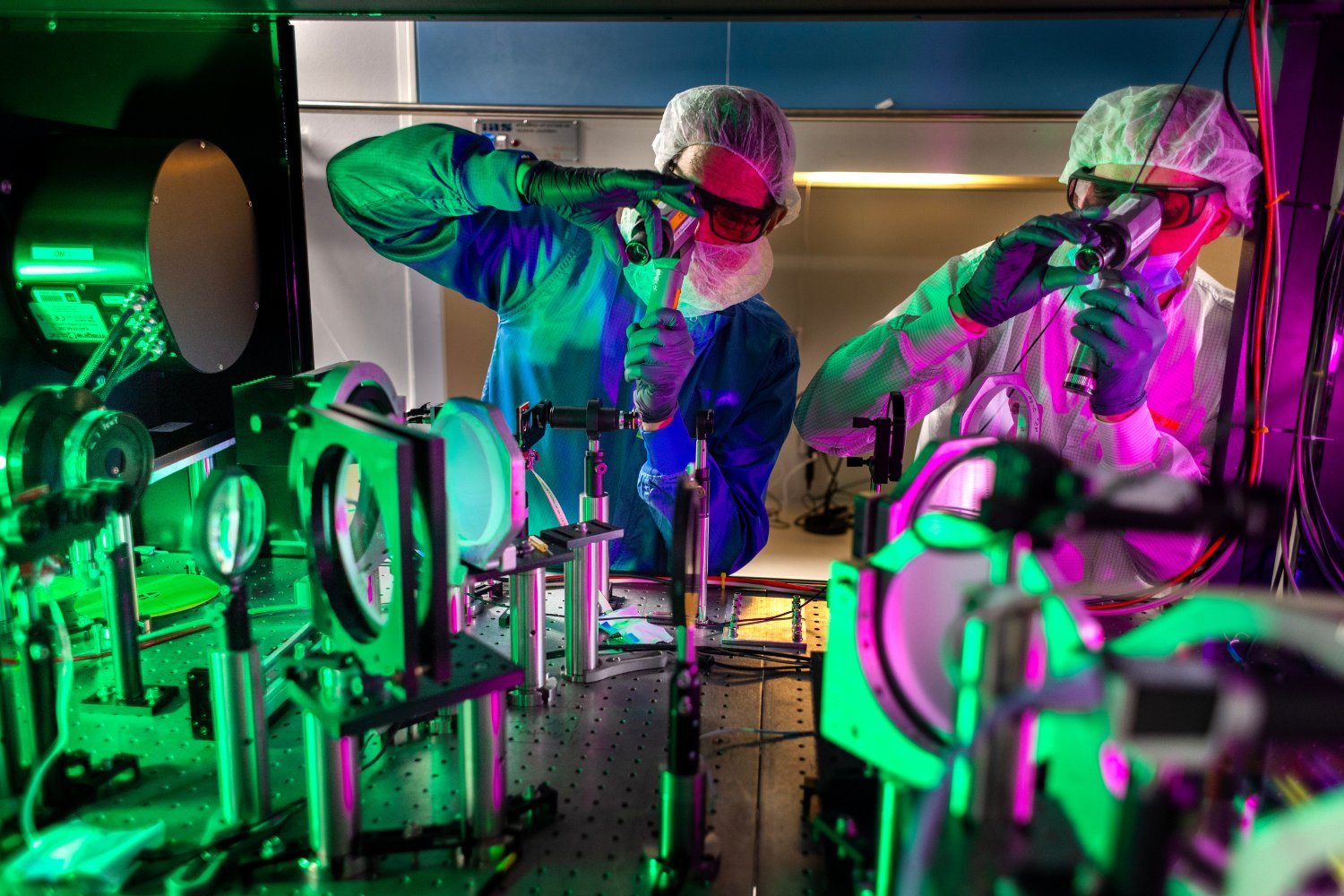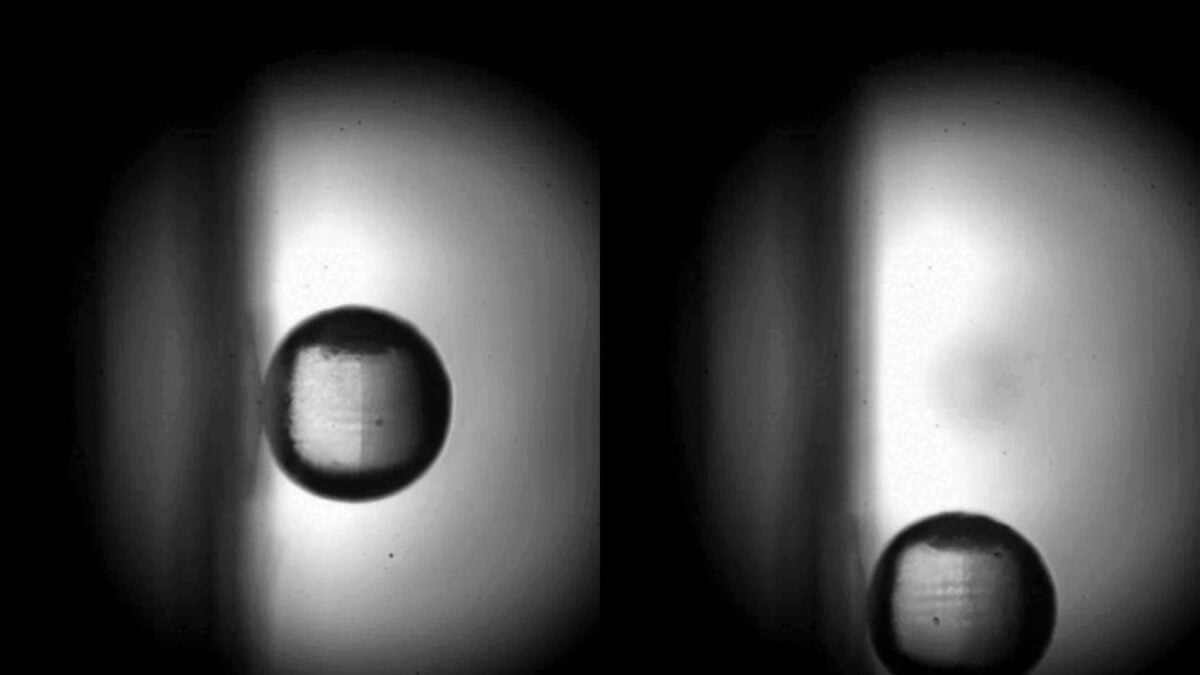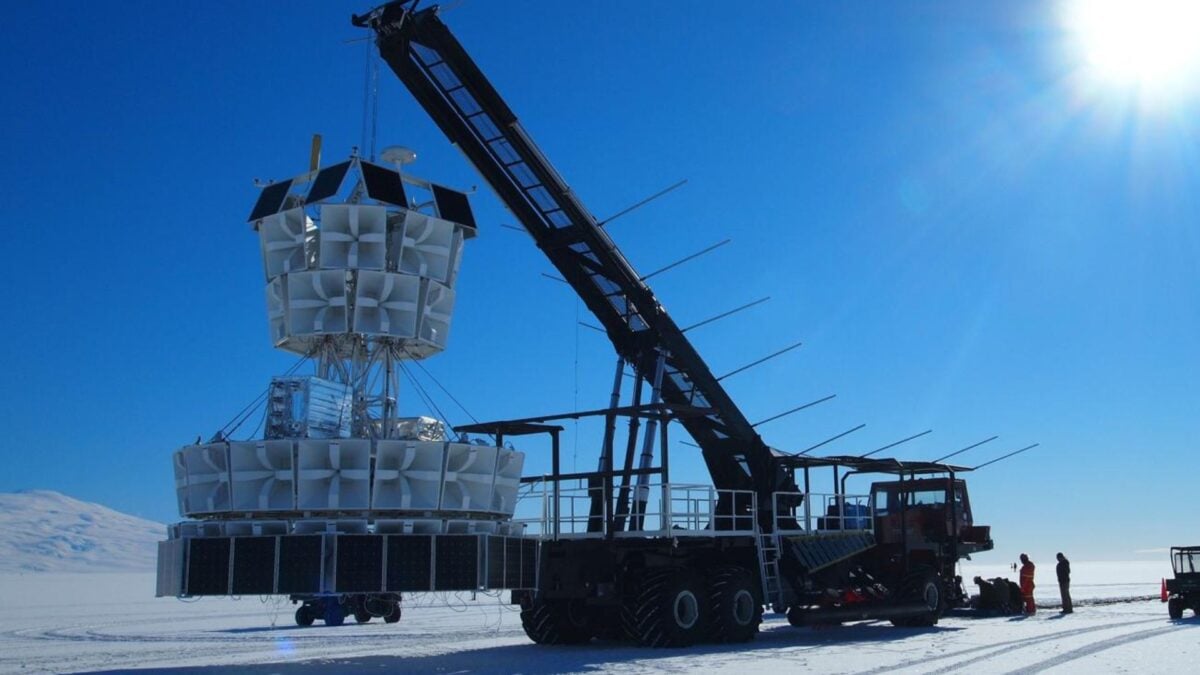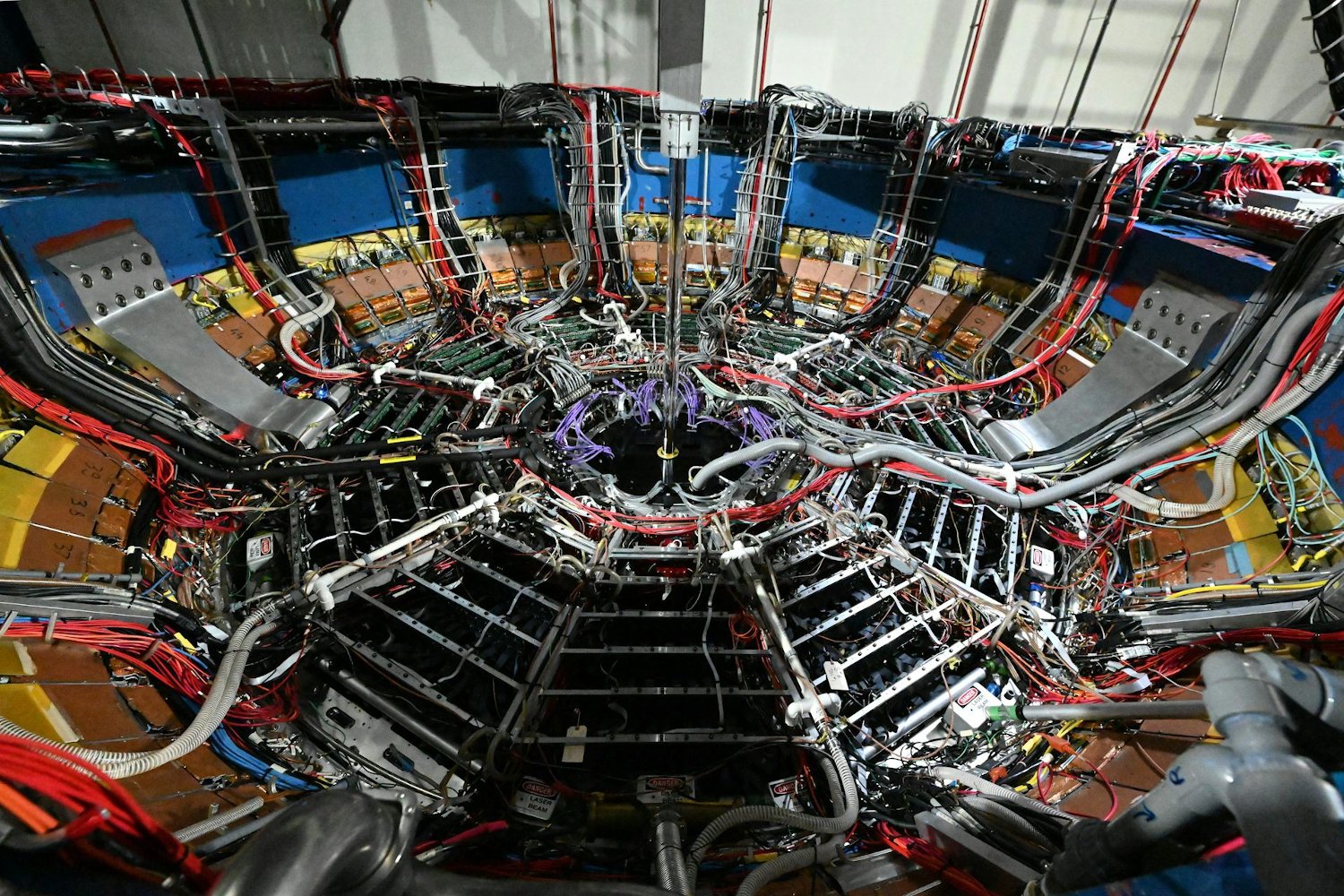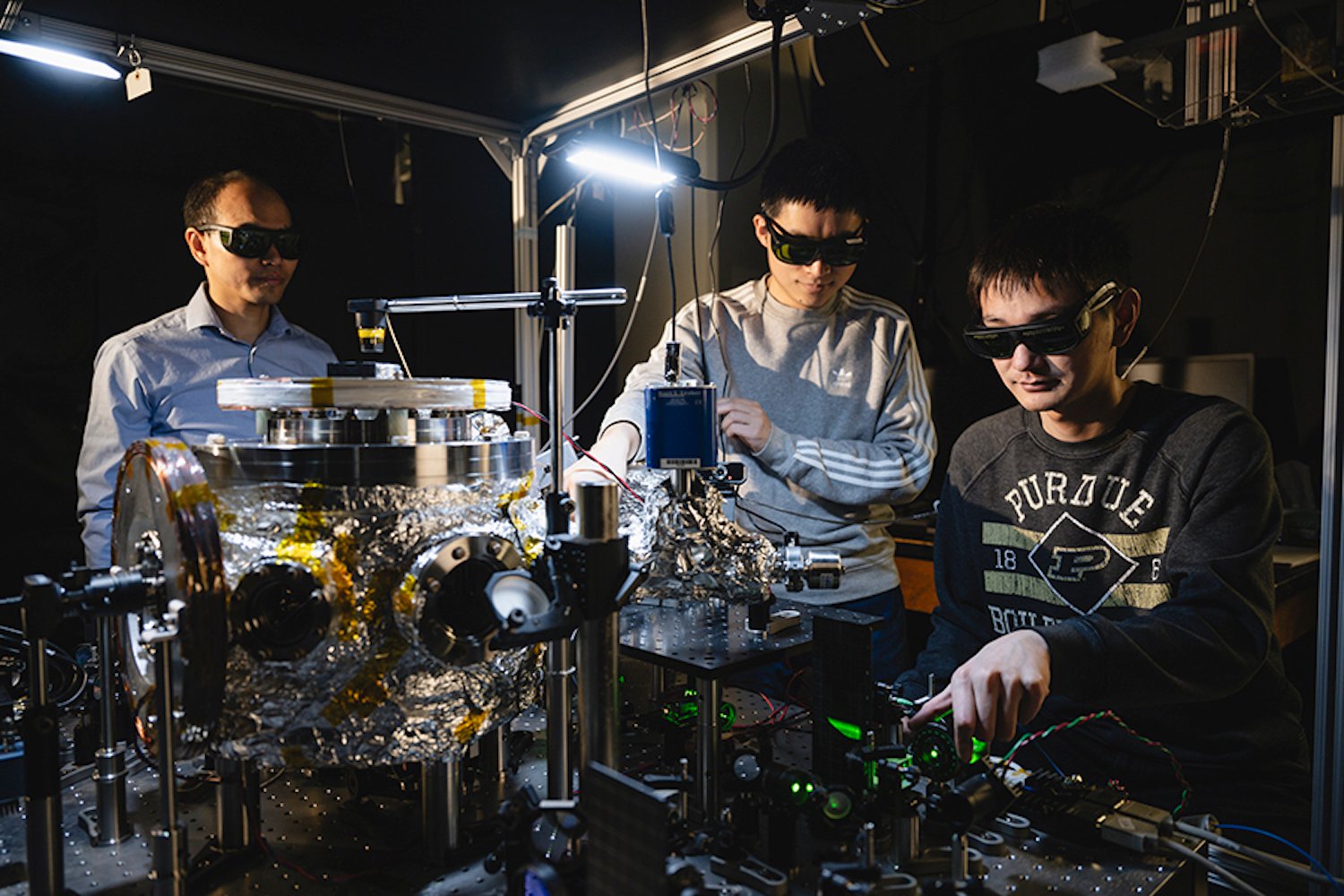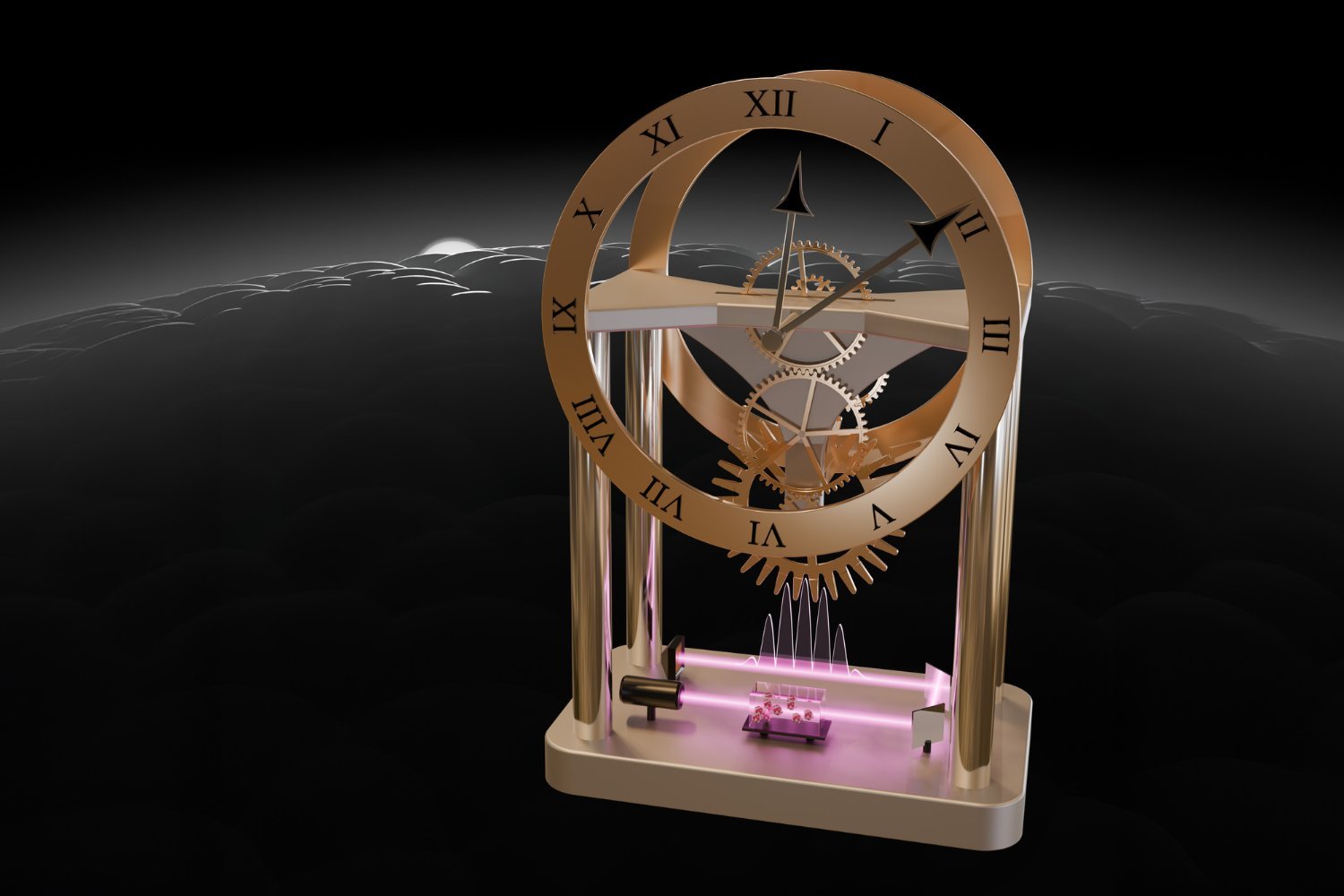The University of Michigan’s ZEUS laser has reached a peak power of 2 petawatts (2 quadrillion watts), making it the most powerful laser in the United States. This immense power, about 100 times the entire planet’s power output, is delivered in ultrashort pulses lasting just 25 quintillionths of a second, opening up new avenues for groundbreaking scientific research. This achievement signifies a major step forward for high-field science in America, enabling exploration of previously uncharted territories.
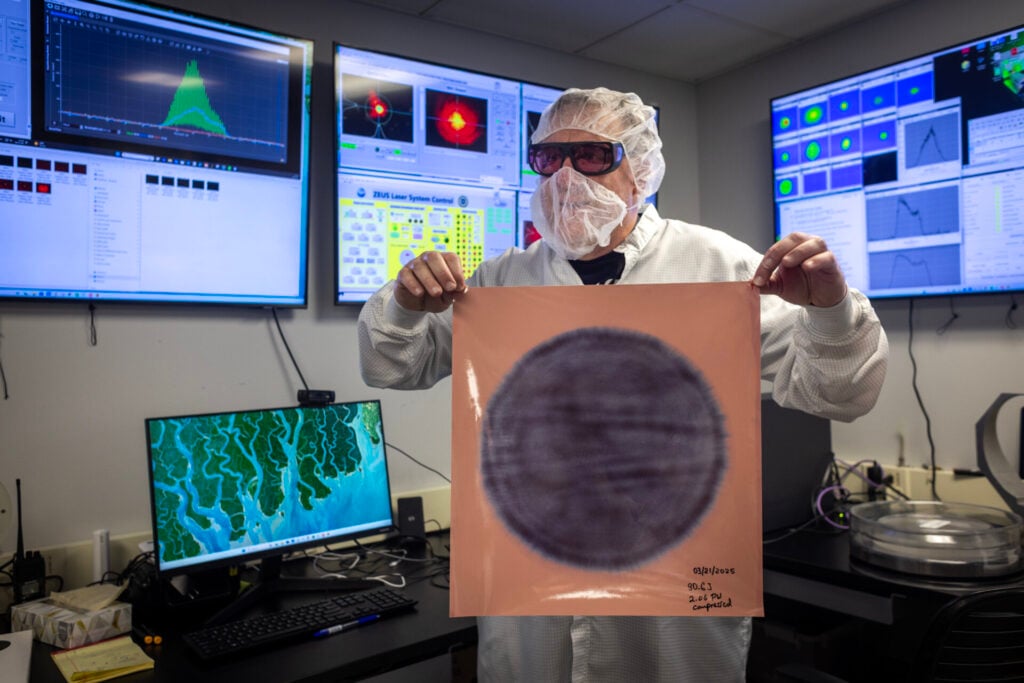 An engineer shows a laser burn mark from the expanded laser pulse.A demonstration of the ZEUS laser’s power with a burn mark from the expanded laser pulse. Image: Marcin Szczepanski, Michigan Engineering
An engineer shows a laser burn mark from the expanded laser pulse.A demonstration of the ZEUS laser’s power with a burn mark from the expanded laser pulse. Image: Marcin Szczepanski, Michigan Engineering
ZEUS, which stands for Zettawatt Equivalent Ultrashort laser pulse System, is funded by the National Science Foundation. Researchers worldwide can apply to conduct experiments using this powerful tool, similar to the Linac Coherent Light Source II (LCLS-II) at the SLAC National Accelerator Laboratory. Like LCLS-II, which explores areas like photosynthesis and stellar cores, ZEUS has applications in diverse fields, including plasma physics, quantum physics, medical imaging, particle acceleration, and materials research.
Comparing ZEUS with LCLS-II
While the individual photons in an LCLS pulse possess significantly higher energy than ZEUS photons (approximately 20,000 times greater), the peak power of LCLS-II is substantially lower than ZEUS, by a factor of 100,000. ZEUS is uniquely suited for various scientific pursuits, including studying physics at extreme intensities, developing new radiation sources, conducting laboratory astrophysics research, and imaging small-scale materials.
Inaugural 2-Petawatt Experiment
The first experiment utilizing ZEUS’s 2-petawatt capability will be led by physicist Franklin Dollar from UC Irvine. The goal is to generate electron beams with energies comparable to those produced by large particle accelerators. If successful, these electron beam energies will be 5 to 10 times higher than any previously achieved by ZEUS. The team will employ wakefield acceleration, a technique where electrons “surf” on plasma waves to achieve ultra-high speeds.
Exploring Extreme Electromagnetic Fields
High peak power lasers like ZEUS allow scientists to investigate the fundamental properties of light under extremely intense electromagnetic fields. Just as ocean waves transform at higher intensities, electromagnetic waves exhibit unique behaviors under extreme field strengths, offering valuable insights into the nature of light itself.
Laser Pulse Characteristics and Future Upgrades
The ZEUS laser pulse can reach a substantial size, up to one foot (0.3 meters) across and several feet long. However, it is focused down to a minuscule 0.8 microns wide to maximize the number of pulses for experiments. Later this year, ZEUS is slated for a significant upgrade with a titanium-doped sapphire crystal, boosting its power to three petawatts. This specially manufactured crystal, measuring about 7 inches (0.18 m) across, will enable even more powerful experiments. By colliding electrons with laser pulses from opposite directions, ZEUS can effectively achieve zettawatt-scale pulses within the particle beam’s frame of reference.
Expanding the Frontiers of Scientific Research
ZEUS has already facilitated over 15 months of user experiments at the single petawatt level. With its enhanced power, it is poised to delve deeper into fundamental physics, promising groundbreaking discoveries with far-reaching implications across various scientific disciplines.
The beam isn’t just powerful—it’s quite large. At its biggest, the laser pulse is one foot (0.3 meters) across and several feet long. Image: Marcin Szczepanski, Michigan Engineering



